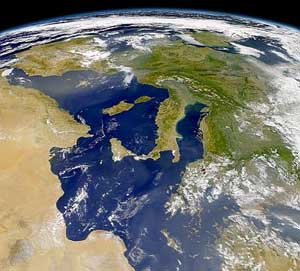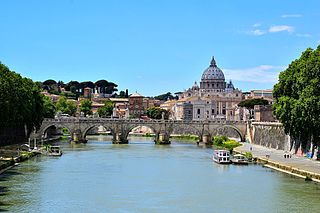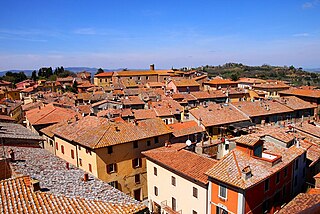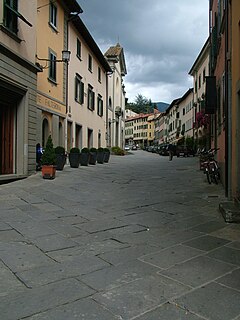The Chiana [kjaːna] (Latin : Clanis or Glanis, Ancient Greek : Κλάνις [1] or Γλάνις [2] ) is a river in the Italian region of Tuscany. [3] It is about 42 km long. It begins in the Apennines of Arezzo, runs through the valley of Chiusi, and flows to the inflow of Paglia just past where the Orvieto flows into the Tiber. Historically, they often caused substantial flooding in the valley of Clusium (Chiusi), which was felt even up to Rome. [3] In the year 15 AD, it was suggested that it be part of the water in the Chiana Arnus (Arno). This project was abandoned because of opposition by the Florentines. [3] Appian mentions that in 82 BC, a battle was fought between Sulla and Gnaeus Papirius Carbo, on the banks of the river, near Clusium, in which the former was victorious. [2] [4]

Italy, officially the Italian Republic, is a country in Southern and Western Europe. Located in the middle of the Mediterranean Sea, Italy shares open land borders with France, Switzerland, Austria, Slovenia and the enclaved microstates San Marino and Vatican City. Italy covers an area of 301,340 km2 (116,350 sq mi) and has a largely temperate seasonal and Mediterranean climate. With around 61 million inhabitants, it is the fourth-most populous EU member state and the most populous country in Southern Europe.

Tuscany is a region in central Italy with an area of about 23,000 square kilometres and a population of about 3.8 million inhabitants (2013). The regional capital is Florence (Firenze).

The Apennines or Apennine Mountains are a mountain range consisting of parallel smaller chains extending c. 1,200 km (750 mi) along the length of peninsular Italy. In the northwest they join with the Ligurian Alps at Altare. In the southwest they end at Reggio di Calabria, the coastal city at the tip of the peninsula. Since 2000 the Environment Ministry of Italy, following the recommendations of the Apennines Park of Europe Project, has been defining the Apennines System to include the mountains of north Sicily, for a total distance of 1,500 kilometres (930 mi). The system forms an arc enclosing the east side of the Ligurian and Tyrrhenian Seas.
In the Middle Ages, the entire valley between Arezzo and Chiusi was an uninhabitable swamp, but towards the end of the 18th century, the engineer Conte Fossombroni addressed the issue, and moved the watershed by about 25 km further south, so that water now flows partly into the Arno and partly into the Tiber. [3]

Arezzo is a city and comune in Italy and the capital of the province of the same name located in Tuscany. Arezzo is about 80 kilometres southeast of Florence at an elevation of 296 metres (971 ft) above sea level. It is also 30 km west of Città di Castello. In 2013 the population was about 99,000.

The Arno is a river in the Tuscany region of Italy. It is the most important river of central Italy after the Tiber.
Coordinates: 42°43′41″N12°07′45″E / 42.7280°N 12.1293°E

A geographic coordinate system is a coordinate system that enables every location on Earth to be specified by a set of numbers, letters or symbols. The coordinates are often chosen such that one of the numbers represents a vertical position and two or three of the numbers represent a horizontal position; alternatively, a geographic position may be expressed in a combined three-dimensional Cartesian vector. A common choice of coordinates is latitude, longitude and elevation. To specify a location on a plane requires a map projection.















